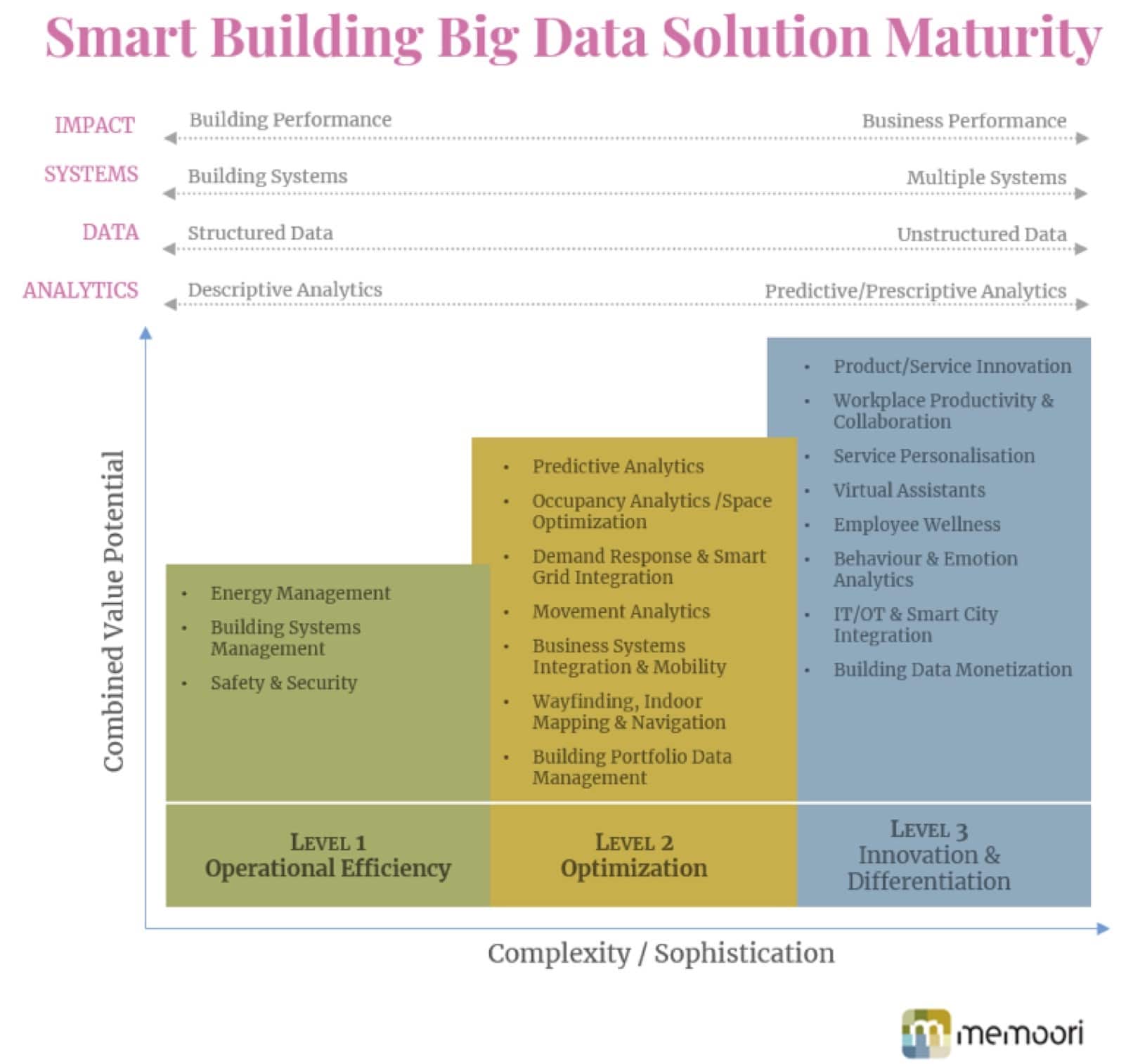Collecting and analyzing buildings data is not a new process and the emergence of the Internet of Things in Buildings (BIOT) has begun to generate enormous amounts of data and information about buildings in recent years. However, the real estate and smart buildings markets have been relatively slow to develop a data-driven culture within their organizations. Only with that cultural shift can buildings hope to fully embrace the full potential of Big Data analytics and the BIoT.
“Taken as a whole the industry is somewhat “late to the party” in terms of mainstream adoption and scalable solutions that link into the activities of the rest of the enterprise relative to other industries,” states our latest report Towards Data-Driven Buildings: Big Data For Smart Buildings 2018 to 2023.
“Many facilities managers, CIOs and CFOs have developed a solid understanding of the value potential of smart building data, but the wider business still often lack an understanding of how to make effective use of data from the built environment.”
The in-depth report explores big data, the Internet of Things (IoT) and other key enabling technologies towards data-driven buildings. Through original analysis, the report identifies 3 distinct levels of maturity a building will pass through during their data-driven transformation. Each level comes through the better collection and use of data, and each unlocks new value-adding applications. The building’s journey, from efficiency to optimization and onto innovation is depicted in the following chart, taken from the report.

“As with Big Data analytics maturity level for the wider Big Data market, maturity levels vary greatly from organization to organization, but based on our assessment of the current state of the market, very few organizations have been successful in achieving level 3 in Smart Building solution maturity; And thereby use their building assets to differentiate themselves in the market or develop innovative new solutions,” the report explains.
This “maturing” process is influenced by a variety of factors including the technical legacy of building management systems, historical underinvestment in modern technologies, and concerns around compliance, security and data privacy, in addition to a general lack of technical expertise. While we are increasingly seeing the successful implementation of solutions from Levels 1 and 2, as much as 33% of all commercial real estate assets are still managed with cumbersome, manual spreadsheets. That includes building stock equating to approximately $11 trillion globally.
Data-driven building maturity is not simply a factor of time. Some buildings may mature rapidly, driven by investment and successful strategies, other buildings may spend a lot but mature very little. “I know of two very similar organizations they have a similar building portfolio, one of them is six years into utilizing data and they continue to drive costs out of their organization and improve the bottom-line every year, the other has an almost identical portfolio and literally can't answer the question - What are my 10 best or worst performing buildings?” said John Petze, Executive Director, Project Haystack.
While a variety of challenges stand in the way of data-driven building maturity, our report finds that the most significant challenge is not related to technology, funding, or even skills, but instead to the culture of the business itself. “Data culture” refers to the way a company organizes and executes around analytics – to reimagine the way the company utilizes data and extend analytics capabilities across the enterprise. While technology can be adopted, funding raised, and skills learned, culture must be developed and encouraged, which can take more time.
“Big transformations take time, and while the vast majority of firms aspire to being “data-driven”, a much smaller percentage have realized this ambition. Cultural transformations seldom occur overnight,” says Randy Bean CEO, NewVantage Partners.
As many as two-thirds of executives believe that there is not enough of a “Big Data culture” in their organization, where the use of Big Data in decision-making is valued and rewarded, according to a paper by the Economist Intelligence Unit (EIU). “The research also shows that organizations are struggling with the enormous volumes of data and often with poor quality data, and many are struggling to free data from organizational silos.
Once an organization can develop that culture and vision, as well as establishing access to appropriate data-sets, employees should be encouraged to identify where the opportunities are themselves. In this way, organizations can then quickly develop proofs of concept and then let the data speak to the situation.
Only by following this path can an organisation can move from a situation where critical business decisions are made based on hypotensis or “gut feeling” to one where data and empirical evidence of trends or business realities drive business decision making. Data maturity can also spur innovation, bringing a number of other benefits to the building.
“Encouraging the adoption of a data-driven culture (where the data is accessible and trusted) can also foster an atmosphere of creativity, knowledge sharing and agile business practice, where dynamic new ideas and concepts can be easily tested with minimal risk through correlations, performance analyses and data modeling,” our report on the journey to data-driven buildings explains.




